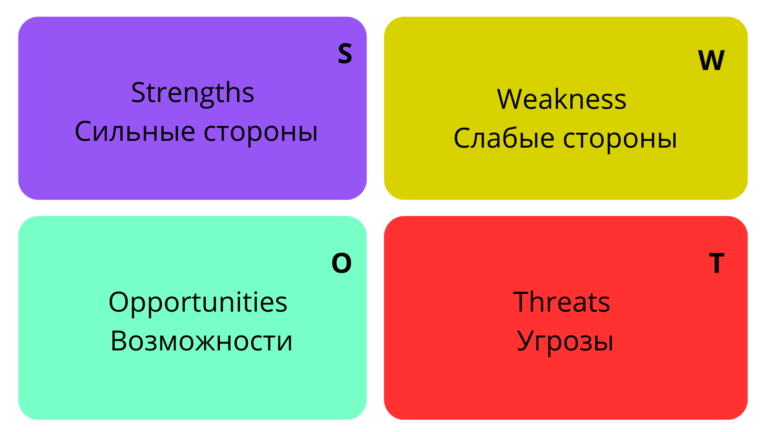Date of publication:
11 Jun. 24How to Use Neural Networks for Predicting Customer Behavior
Using neural networks to predict customer behavior opens up unique opportunities for businesses. This advanced technology allows for the analysis of vast amounts of data, identification of hidden patterns, and accurate prediction of future customer actions. Neural networks can significantly enhance the personalization of marketing campaigns, increase customer satisfaction, and boost sales. Implementing these methods helps companies make more informed decisions and effectively manage customer relationships.
What is a Neural Network
A neural network, or artificial neural network (ANN), is a mathematical model inspired by the workings of the human brain. It consists of numerous interconnected nodes (neurons) that work together to process information, learn, and perform complex tasks.
Key Components of a Neural Network:
- Neurons (Nodes): Fundamental elements of the neural network, similar to biological neurons, that process and transmit information.
- Layers: Neural networks typically consist of an input layer, one or more hidden layers, and an output layer. Each layer contains neurons that perform specific functions.
- Input Layer: Receives input data and transmits it to the hidden layers.
- Hidden Layers: Process information using various algorithms and activation functions.
- Output Layer: Produces the final output of the network.
- Weights and Biases: Each neuron has weights and biases that are adjusted during training to optimize the network’s performance.
How a Neural Network Works:
- Initialization: Weights and biases are initialized with random values.
- Forward Propagation: Input data passes through the layers of neurons, undergoing mathematical computations, including multiplying inputs by weights, adding biases, and applying activation functions.
- Output: The neural network produces a result in the output layer.
- Backward Propagation: After obtaining the result, the network evaluates the error (the difference between the predicted and actual values) and adjusts the weights and biases to minimize this error.
Applications of Neural Networks:
- Image Recognition: Used for recognizing faces, objects, and symbols in images.
- Natural Language Processing: Applied in text translation, speech recognition, and sentiment analysis.
- Medical Diagnostics: Assist in analyzing medical images and predicting diseases.
- Financial Services: Used for predicting market trends and detecting fraud.
- Automation and Robotics: Employed for controlling robots and autonomous vehicles.
The Role of Forecasting in Modern Business
Neural networks, once primarily associated with artificial intelligence and deep learning, have now become reliable tools in business analytics. Their ability to analyze data, identify patterns, and make predictions based on complex data sets opens up new horizons for strategic decision-making.
In analytics, neural networks can process large volumes of both structured and unstructured data. They are trained on historical data, uncover hidden patterns, and use this information to predict future events, including customer behavior.
It is important to note that the successful use of neural networks in analytics requires quality data, preparation, and expertise. However, their potential is enormous, and they can become a powerful tool for businesses striving for more accurate and informed decisions.
Business Applications of Neural Networks
Neural networks, as a key technology within artificial intelligence (AI), present a wide range of opportunities for innovation and efficiency enhancement in business. Their applications span various areas, from automating routine tasks to developing new products and services.
Key Capabilities of Neural Networks for Business:
- Automation of Routine Processes: Neural networks can perform repetitive tasks faster and more accurately than humans. This includes data processing, accounting, inventory management, and other administrative functions. Automating these processes reduces costs, minimizes errors, and frees up employees to handle more complex tasks.
- Data Analysis and Forecasting: One of the most valuable applications of neural networks is analyzing large volumes of data. Neural networks can identify hidden patterns and trends that traditional methods cannot detect. This enables companies to more accurately forecast demand, analyze customer behavior, and make data-driven decisions.
- Personalized Marketing: Neural networks help create personalized marketing campaigns by analyzing customer behavior and preferences. This allows businesses to offer the most relevant products and services to each customer, increasing customer satisfaction and sales. Personalized marketing strengthens customer loyalty and extends their lifetime value.
- Improvement of Customer Service: Chatbots and virtual assistants powered by neural networks can handle customer inquiries in real time, providing accurate and quick responses. This enhances service quality and reduces wait times, which is crucial for 24/7 customer support. These solutions also reduce the load on support teams and lower operational costs.
- Supply Chain Optimization: Neural networks can analyze supply and demand data to optimize inventory management and logistics. This helps reduce storage costs, minimize shortages or excesses of goods, and improve overall supply chain efficiency. Forecasting based on neural networks ensures more accurate planning and timely delivery of products.
- Development of New Products and Services: Neural networks can be used to create innovative products and services. For example, in the medical field, neural networks assist in developing new diagnostic and treatment methods. In the financial sector, they help create advanced risk management models. Neural networks are also used in the entertainment industry to create personalized content and recommendations.
- Enhanced Security: Neural networks can analyze anomalies and suspicious activities to prevent cyberattacks and fraud. In financial organizations, this helps protect transactions and personal data. In manufacturing companies, it ensures the safety of work processes and equipment.
By leveraging these capabilities, businesses can significantly enhance their operations, improve customer satisfaction, and drive innovation.
Tasks and Applications of Neural Networks in Business
We have identified three main tasks for neural networks in business:
- Forecasting consumer demand
- Detecting fraud and anomalies
- Segmenting customers
Additionally, we propose 10 ways to apply neural networks in business. Let’s go through them step by step.
Forecasting Consumer Demand
Forecasting consumer demand is critically important for companies aiming to efficiently manage inventory, offer personalized promotions, and improve overall customer satisfaction. Over time, the complexity of this task has increased due to the larger volume of data and the variety of factors influencing consumer behavior.
In this context, neural networks, with their ability to analyze and identify complex patterns in data, have become a powerful tool for forecasting consumer demand. Their deep learning and backpropagation algorithms allow them to detect hidden patterns in large datasets.
The advantage of neural networks lies in their capability to work with multidimensional data, including information about customers, time, location, and many other factors. They can account for the dynamics of changing consumer behavior and adapt to evolving market conditions.
Neural network-based models can create accurate forecasts, enabling companies to optimize their operations and provide customers with individualized offers. This, in turn, enhances the company’s competitiveness and improves customer service levels.
Using neural networks to forecast consumer demand allows companies not only to predict future market requirements more accurately but also to make strategic decisions based on data and analytics. All this contributes to improving business processes and meeting consumer demands, making this method a crucial element of modern enterprise management.
Fraud and Anomaly Detection
The use of neural networks for predicting customer behavior also has a significant impact on security and fraud detection. Companies face daily challenges related to fraudulent activities, whether in online payments, banking operations, or e-commerce.
Neural networks can analyze vast amounts of data and identify anomalies that might go unnoticed by human observers. This includes detecting unusual patterns in customer behavior, such as strange transactions, logins from unfamiliar devices, and suspicious activities on websites.
By leveraging neural networks, companies can respond to potential threats in real-time, reducing the risk of financial losses and brand damage. This technology also helps protect honest customers from fraudulent attacks, ensuring a higher level of security in the online space.
Thus, the use of neural networks for fraud and anomaly detection is highly valuable for companies engaged in customer service. These methods not only enhance security but also improve the overall customer experience by protecting them from potential risks and ensuring reliability and trust in their relationship with the brand.
Customer Segmentation
Customer segmentation is a key element of a successful engagement and marketing strategy. Neural networks bring this process to a new level of efficiency. Instead of relying on traditional approaches based on generalized data and statistics, neural networks analyze vast amounts of information to create more detailed and accurate segments.
These networks can identify common characteristics, interests, and preferences of customers based on their online behavior, purchase history, and interactions with web resources. This allows companies to tailor personalized content and recommendations, providing customers with exactly what they need, when they need it.
The advantages of segmentation using neural networks include increased customer loyalty, higher conversion rates, and more efficient resource management. Customers receive more valuable and relevant offers, which enhances their experience and trust in the brand. Simultaneously, companies reduce marketing and advertising costs by more accurately targeting an audience likely to respond to their offers.
Customer segmentation using neural networks provides companies with an innovative tool for closely engaging with customers and offering products and services that meet their needs. This helps to strengthen the bond between the brand and its customers, which is a fundamental aspect of successful business in today’s digital world.
10 Ways to Use Neural Networks in Customer Relations
Neural networks are revolutionizing the approach to customer interaction by offering innovative solutions to enhance service.
Ways to Use Neural Networks in Customer Relations:
- Personalized Marketing: Neural networks analyze customer behavior and preferences to create personalized product and service recommendations.
- Example: Recommendation systems on platforms like Amazon or Netflix suggest products and content to users based on their past purchases and viewing history.
- Processing and Analyzing Customer Reviews: Neural networks help analyze customer reviews to identify key themes and emotional tones.
- Example: Using natural language processing (NLP) algorithms to analyze comments on websites and social media.
- Chatbots and Virtual Assistants: Neural networks are used to create intelligent chatbots that can answer customer questions and provide real-time support.
- Example: Chatbots on banking or e-commerce websites that assist users with inquiries and transactions.
- Predicting Customer Churn: Neural networks analyze customer behavior to predict which customers might stop using a company’s services.
- Example: Machine learning models that identify customers with a high likelihood of churn, allowing the company to take preventive measures.
- Customer Segmentation: Neural networks help segment the customer base based on various characteristics and behaviors.
- Example: Segmenting customers by demographic data, purchase history, and website activity for targeted marketing campaigns.
- Price Management and Optimization: Using neural networks to analyze market data and customer behavior to optimize pricing strategies.
- Example: Dynamic pricing in online retail, where prices change based on demand and competitor offerings.
- Automating Customer Query Processing: Neural networks help automate the processing of customer queries, such as classifying and routing emails or requests.
- Example: Systems that automatically direct customer emails to the appropriate departments within a company.
- Image and Facial Recognition: Neural networks are used for image and facial recognition to enhance customer interaction.
- Example: Security systems and personalized greetings in retail stores based on facial recognition.
- Analyzing Customer Data to Improve Products: Neural networks analyze product usage data to identify areas for improvement.
- Example: Analyzing mobile app usage to improve the user interface and features.
- Creating Personalized Content: Neural networks help create content tailored to the interests and needs of specific customers.
- Example: Generating personalized emails and offers for each customer based on their preferences and behavior.
Trends and Directions in Neural Networks Development
The role of neural networks in analyzing and predicting customer behavior continues to expand. One key direction of development is the increasing accessibility and ease of use of this technology. With the development of highly accessible and user-friendly tools, many companies, regardless of size, will be able to utilize neural networks for data analysis and prediction. Another trend is the improvement of model interpretation methods. The more understandable and explainable the decision-making process of a neural network, the more trust it will instill. Progress in this direction will facilitate the application of neural networks across a wider range of industries, including medicine and finance. Research in neural networks is also aimed at improving accuracy and the ability to learn from smaller datasets. This will enable smaller companies to collect and analyze customer data without possessing huge volumes of information. Addressing ethical aspects and data security issues will remain a priority, and new standards and rules will be developed to protect the privacy of customers. These trends in the field of neural networks promise to expand the capabilities of customer behavior prediction and integrate this technology into everyday business practices.
The Bottom Line
The use of neural networks for predicting customer behavior opens up new horizons for businesses in understanding and meeting the needs of their audience. These technologies not only enable the analysis of vast amounts of data with high accuracy but also uncover hidden patterns and trends that are difficult to notice using traditional methods. Predicting customer behavior with neural networks helps companies to target marketing campaigns more accurately, improve the personalization of offers, and increase customer satisfaction levels. Automating data analysis frees up resources and time, allowing businesses to focus on strategic development.



